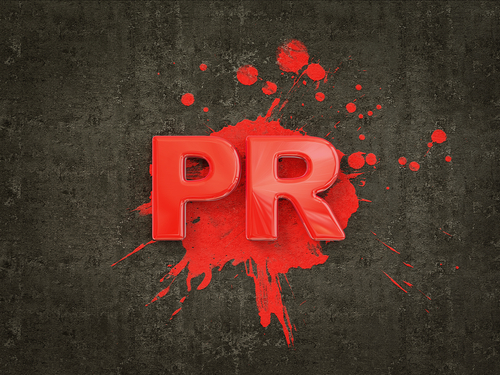Love them or hate them, conferences and trade shows are key venues for any business to generate public relations, marketing, and sales returns. If you’ve ever attended a major tech trade show, you know they can be a blur of handshakes, branded swag, business cards, and mediocre meals. How to make the most of a time and dollar investment in a trade show or conference? Our own Chris Harihar offers some sage advice on navigating the world of B2B conferences.
7 ways to make an impact at a business conference
Choose wisely
There’s a business conference for every conceivable vertical, niche, and sector; and they come in various sizes and cities around the world. Since the ideal lead time for earning a speaking opportunity is six to nine months, and sponsorships take planning for maximum benefit, a PR team must incorporate a conference strategy in its annual planning. Is the goal to generate awareness, leads, and sales? To build an executive profile? To grow relationships with influencers, media, and colleagues? A sales-oriented trade show like Cloud Expo in New York may work for many goals, while a more ideas- driven one like Fortune Live Media may align better with thought leadership objectives. A consistent presence at carefully selected conferences year round can produce good ROI, as well as support PR goals.
For maximum impact, over-prepare
A B2B company can set itself up for success with some logistical planning and research. The first step is to work with organizers to earn speaking and event opportunities at the most advantageous times. The team should study the layout and the schedule well ahead of time, as well as the attendee and exhibitor lists to scope out a plan to be in front of the right people. A good PR team will get a list of attending media to plot their outreach and set up briefings. Some even create a “facebook”-type schedule with head shots of key contacts to maximize networking opportunities. Armed with advance intelligence, a company can create its own minute-by-minute schedule to avoid wasting the considerable time and money invested in the conference.
Bring the news
If a company has news to share — an acquisition, new product launch, or growth milestone, the conference backdrop can add sex appeal and offer the benefit of a captive audience of media and insiders. Experienced PR professionals often coordinate an announcement with a major conference appearance to maximize interest and visibility. Yet with so much noise at trade events, it’s hard to draw attention to your brand. The trick is to pay close attention to timing; even a company’s big news can get lost in a wave of similar announcements. At last month’s Microsoft Ignite, there were so many announcements that Microsoft had to issue a media a 27-page booklet for attendees. Consider making an announcement the day before the conference through a media exclusive slated for breakfast the morning of the first day. Or, sponsor a mealtime slot for breaking news — a time-honored trick that helps turn out press hungry for stories as well as lunch.
Bring PR to the show
Having a PR team member on-site for media relations support at a key conference isn’t a luxury. It’s a necessity. PR can continuously rove the event floor to wrangle relevant media and influencers to engage. While the sales team is working at the booth or in private meetings, the PR team can take the offensive as your advocates. There are often video assets developed by conference coordinators on-site to promote the event through digital and social channels. PR teams can chase down those opportunities as part of a plan of attack well in advance of the conference.
Get creative to stand out
It’s not enough to simply sponsor, exhibit, or speak at a conference these days. To maximize the value of the investment, think outside of the programmed opportunities. Rather than putting big dollars into a larger booth, consider using some of that budget to host an off-site dinner or cocktail hour, to which the PR team can invite press, clients, and prospects. This helps a brand separate itself from the crowd and earn a captive audience. B2B tech conferences can often get monotonous. An offsite happening allows a company to shake things up a bit, keeping it top-of-mind among the right audiences.
Be social
It’s remarkable how many brands still don’t optimize their event presence through social media. In advance of a conference, brands should consider paid and organic content strategies to gain more ownership of the event’s hashtag. For example, while Facebook isn’t a huge lead-gen source for B2B businesses, creating content for Facebook Live can be repurposed well after the conference ends. These videos can be easily shared with media who may not have attended but want more information about key announcements or trends. See our earlier post for tips on how social media drives B2B PR. But note that when the conference ends, the work does not.
Follow through
If a good one is available, the company should use the event video of the thought leader’s speech or panel appearance by posting on its owned media and amplifying on social channels like LinkedIn. An executive appearance can bolster the individual’s reputation, building a resume for other earned conference engagements. Additionally, the PR team may develop the speech into a white paper or byline. PR will nurture all the new media and influencer connections it made, just as sales will follow up on its leads. When a company has mastered the trade show experience from preparation to follow-through, it can build a consistent brand presence on big thought leadership stages year-round.


 The video stories are shared on all other social channels. Software provider Zendesk regularly posts customer success stories on its
The video stories are shared on all other social channels. Software provider Zendesk regularly posts customer success stories on its 







